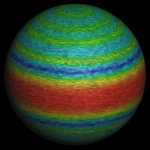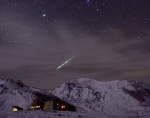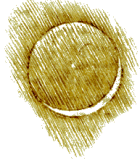One of my top 10 things to be thankful for is technology, which gives mankind insights into the unknown. One of these technological wonders is SOHO, the Solar and Heliospheric Observatory Satellite located at Earth’s inner Lagrangian point.
From SpaceWeather.com:
10 YEARS OF SOHO: Where would we be without SOHO? The orbiting Solar and Heliospheric Observatory (SOHO) keeps a ’round-the-clock eye on the sun and is crucial to space weather forecasting. Thousands of our readers have witnessed auroras only because SOHO spotted an incoming CME [coronal mass ejection] in time for us to issue an alert.
So it is with pleasure and appreciation that we wish a happy 10th anniversary to the SOHO team, whose spacecraft was launched on Dec. 2nd, 1995. Originally planned as a two year mission, SOHO is now entering its second decade. Amazing.
And an article from Astronomy Picture of the Day indicates that operations are planned to continue until 2007, at which time SOHO will have been in position to observe a complete 11-year solar cycle (which, as we all know, is responsible for climate change and other phenomena – not the puny efforts of mankind who the moonbat left blame for the mythical global warming).

 A new computer model indicates Jupiter’s massive winds are generated from deep within the giant planet’s interior, a UCLA scientist and international colleagues report in the journal Nature.
A new computer model indicates Jupiter’s massive winds are generated from deep within the giant planet’s interior, a UCLA scientist and international colleagues report in the journal Nature. FIREBALL SIGHTINGS: In recent nights, sky watchers have seen some spectacular fireballs. Experts suspect it’s the Taurid meteor shower, a display caused by debris from Comet Encke.
FIREBALL SIGHTINGS: In recent nights, sky watchers have seen some spectacular fireballs. Experts suspect it’s the Taurid meteor shower, a display caused by debris from Comet Encke.